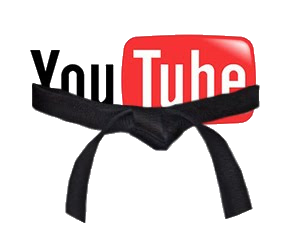Can Wing Chun Be Self-Taught?
By Maurice Novoa a master under the Yuen Kay Shan, Ip Man and Pan Nam lineages.
Introduction:
Wing Chun, a traditional Chinese martial art, is renowned for its practicality, efficiency, and close-quarters combat techniques. Aspiring martial artists often wonder whether it is possible to learn Wing Chun without formal instruction or guidance. While self-teaching can be a viable option for some skills, it is essential to understand the complexities and challenges involved in attempting to learn Wing Chun without a qualified instructor. Let us explore the key factors to consider when contemplating self-teaching Wing Chun.
Fundamental Principles and Concepts:
Wing Chun encompasses a set of fundamental principles and concepts that form the core of its techniques and strategies. These principles, such as centerline control, simultaneous attack and defense, and economy of motion, are best learned under the guidance of an experienced instructor. They require hands-on correction and personalized instruction to grasp fully. Without proper guidance, there is a risk of misinterpreting or misunderstanding these principles, which can hinder the development of effective Wing Chun skills.
Correct Techniques and Body Mechanics:
Wing Chun’s effectiveness lies in its precise techniques and efficient body mechanics. Learning and executing these techniques correctly require careful observation, practice, and correction. An instructor can provide detailed explanations, demonstrate proper form, and make necessary adjustments to ensure correct execution. Without this guidance, there is a higher likelihood of developing incorrect habits, which can limit the effectiveness of Wing Chun techniques and potentially lead to injuries.
Sparring and Realistic Application:
Wing Chun’s practicality is best honed through realistic training scenarios and sparring. Applying techniques in a dynamic environment against resisting opponents is crucial to understanding their effectiveness and developing timing, reflexes, and adaptability. Self-teaching may not provide the necessary opportunities for sparring or realistic application, which can hinder the practicality and effectiveness of Wing Chun techniques.
Lack of Feedback and Progress Evaluation:
One of the significant advantages of learning Wing Chun under an instructor is the continuous feedback and progress evaluation they provide. They can identify areas that need improvement, offer guidance for advancement, and provide motivation. Without this feedback loop, self-taught practitioners may struggle to objectively assess their progress, correct mistakes, and identify areas for growth.
Supplemental Resources and Cross-Training:
While self-teaching Wing Chun is challenging, it is possible to complement one’s learning with supplemental resources. Books, videos, and online tutorials can provide additional insights, explanations, and demonstrations. However, these resources should be used as supplements rather than replacements for formal instruction. Furthermore, cross-training with other martial arts can provide valuable perspectives, enhance skills, and broaden one’s understanding of combat dynamics.
The Role of the Wooden Dummy:
The Wing Chun wooden dummy, also known as the Muk Yan Jong, is a wooden training apparatus that simulates a human opponent. It consists of wooden arms and legs arranged in specific positions, providing practitioners with a structured framework for training. The dummy enables self-taught learners to practice techniques, improve reflexes, and develop muscle memory, all essential elements of Wing Chun training.
Benefits of Self-Taught Wing Chun with the Wooden Dummy:
a) Consistent Training: The wooden dummy allows you to practice Wing Chun techniques consistently without relying on a training partner. You can establish a regular training routine, enabling you to refine your skills at your own pace.
b) Correct Body Alignment: The dummy helps you maintain proper body alignment, posture, and structure, crucial aspects of Wing Chun. By repeatedly striking the dummy, you develop a solid foundation, ensuring your movements are efficient and effective.
c) Improved Precision and Timing: Practicing on the wooden dummy enables you to refine your striking accuracy, speed, and timing. The dummy’s stationary nature allows you to focus on executing techniques with precision, honing your skills before transitioning to dynamic sparring scenarios.
d) Building Strength and Endurance: Working with the wooden dummy builds strength in the arms, legs, and core muscles, enhancing your overall physical fitness. Regular training develops stamina and endurance, allowing you to sustain longer training sessions and perform at your best during real combat situations.
Conclusion
In conclusion, a certain martial art is a multifaceted discipline that necessitates proper instruction, guidance, and active training to achieve optimal learning and growth. While attempting to self-teach this martial art may seem appealing, it is crucial to acknowledge the inherent limitations and challenges involved. The presence of a qualified instructor is indispensable as they offer essential guidance, corrections, and opportunities for hands-on practice, all of which are vital for mastering this martial art effectively. Nonetheless, additional resources and engaging in cross-training can complement one’s learning journey. Ultimately, by combining formal instruction with self-directed study, individuals can develop a more comprehensive understanding of this martial art and make better progress as martial artists.

